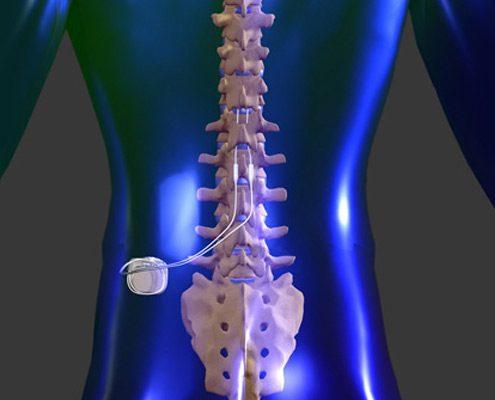
Spinal Cord Stimulator for Cancer Pain
Cancer pain can be one of the most debilitating symptoms for patients undergoing treatment. Traditional pain management methods, including medications and therapies, often fail to provide adequate relief, leaving patients in a constant state of discomfort and distress. This is where a spinal cord stimulator for cancer pain comes into play, offering a beacon of hope for those suffering from chronic cancer pain. In this blog post, we will delve into the intricacies of spinal cord stimulation, its effectiveness in managing cancer pain, and its impact on the quality of life for patients.
Understanding Cancer Pain and the Role of a Spinal Cord Stimulator
Cancer pain can arise from various sources. Tumors pressing on bones, nerves, or other organs can cause significant discomfort. Additionally, treatments like chemotherapy, radiation, and surgery can lead to painful side effects. The nature of cancer pain is often chronic, meaning it persists over a long period and can vary in intensity. Managing this pain effectively is crucial for the overall well-being of cancer patients, enabling them to lead more comfortable and fulfilling lives.
What is a Spinal Cord Stimulator for Cancer Pain?
A spinal cord stimulator for cancer pain is a medical device that delivers electrical impulses to the spinal cord to interfere with the transmission of pain signals to the brain. The device consists of a small pulse generator implanted under the skin, usually in the lower back or abdomen, and leads with electrodes that are positioned near the spinal cord. By sending electrical impulses, the spinal cord stimulator for cancer pain modifies the pain signals before they reach the brain, resulting in a reduction or even elimination of the sensation of pain.
How Does a Spinal Cord Stimulator for Cancer Pain Work?
The mechanism of action for a spinal cord stimulator for cancer pain involves the gate control theory of pain. According to this theory, the spinal cord contains a neural "gate" that can either allow or block pain signals from reaching the brain. The electrical impulses generated by the spinal cord stimulator for cancer pain close this gate, thereby preventing the pain signals from being perceived. Patients often describe the sensation produced by the stimulator as a tingling feeling, which masks the pain.
Benefits of a Spinal Cord Stimulator for Cancer Pain
Effective Pain Relief with a Spinal Cord Stimulator for Cancer Pain: One of the primary benefits of a spinal cord stimulator for cancer pain is its ability to provide significant pain relief where other treatments have failed. Studies have shown that spinal cord stimulation can reduce pain levels by 50% or more in many patients. This is particularly beneficial for cancer patients who may have limited options for pain management.
Reduced Dependency on Pain Medications: Chronic use of pain medications, particularly opioids, can lead to a range of side effects including drowsiness, constipation, and the risk of addiction. By providing an alternative method of pain relief, a spinal cord stimulator for cancer pain can reduce the need for these medications, thereby minimizing their associated risks and improving the patient’s quality of life.
Improved Quality of Life: Pain can significantly impact a patient's ability to perform daily activities, affecting their physical and mental well-being. With effective pain management through a spinal cord stimulator for cancer pain, patients can experience improved mobility, better sleep, and enhanced overall mood. This improvement in quality of life is invaluable for cancer patients who are already dealing with the stress and challenges of their disease and treatment.
Adjustable and Reversible Treatment: One of the advantages of a spinal cord stimulator for cancer pain is its adjustability. The level of stimulation can be tailored to the individual needs of the patient, ensuring optimal pain relief. Moreover, the treatment is reversible. If a patient decides that spinal cord stimulation is not providing the desired relief or if they experience side effects, the device can be removed without permanent changes to the spinal cord or surrounding structures.
The Procedure for Implanting a Spinal Cord Stimulator for Cancer Pain
The implantation of a spinal cord stimulator for cancer pain typically involves two stages: a trial period and the permanent implantation.
Trial Period for a Spinal Cord Stimulator for Cancer Pain: Before committing to permanent implantation, patients undergo a trial period to determine if spinal cord stimulation is effective for their pain. During this trial, temporary leads are placed near the spinal cord, and the patient is given a portable pulse generator. This trial usually lasts about a week, allowing the patient and their medical team to assess the level of pain relief and any side effects.
Permanent Implantation of a Spinal Cord Stimulator for Cancer Pain: If the trial period is successful, the patient can proceed to the permanent implantation. This procedure is performed under local anesthesia and involves placing the pulse generator under the skin and securing the leads in place. The entire procedure typically takes a few hours, and most patients can return home the same day.
The Future of Spinal Cord Stimulation for Cancer Pain
Advancements in technology continue to improve the efficacy and convenience of spinal cord stimulators for cancer pain. Modern devices offer wireless charging, MRI compatibility, and enhanced programming options that allow for more precise control over pain relief. Researchers are also exploring new stimulation patterns and waveforms to further optimize the effectiveness of spinal cord stimulators for cancer pain.
Additionally, there is ongoing research into expanding the use of spinal cord stimulation for other types of chronic pain beyond cancer. These advancements promise to make spinal cord stimulation an even more valuable tool in the arsenal of pain management.
Healthy Türkiye Notes
For cancer patients grappling with chronic pain, a spinal cord stimulator for cancer pain offers a promising solution. By effectively reducing pain, minimizing reliance on medications, and enhancing quality of life, spinal cord stimulators for cancer pain can play a crucial role in the overall treatment plan for cancer pain management. While it may not be suitable for everyone, the ability to tailor the treatment to individual needs and the option for reversibility make it a compelling option for many patients.
As technology continues to evolve, spinal cord stimulators for cancer pain are poised to become an even more integral part of pain management strategies, offering hope and relief to those who need it most. For patients and healthcare providers alike, staying informed about the latest advancements and understanding the potential benefits and risks of spinal cord stimulators for cancer pain is essential in making the best possible decisions for pain management in cancer care.
At Healthy Türkiye, we strive to make these innovative treatments accessible to patients worldwide, ensuring a seamless experience from initial consultation to post-treatment care. Our comprehensive approach includes transparent information, travel organization, and continuous support, making us a trusted partner in health tourism.



